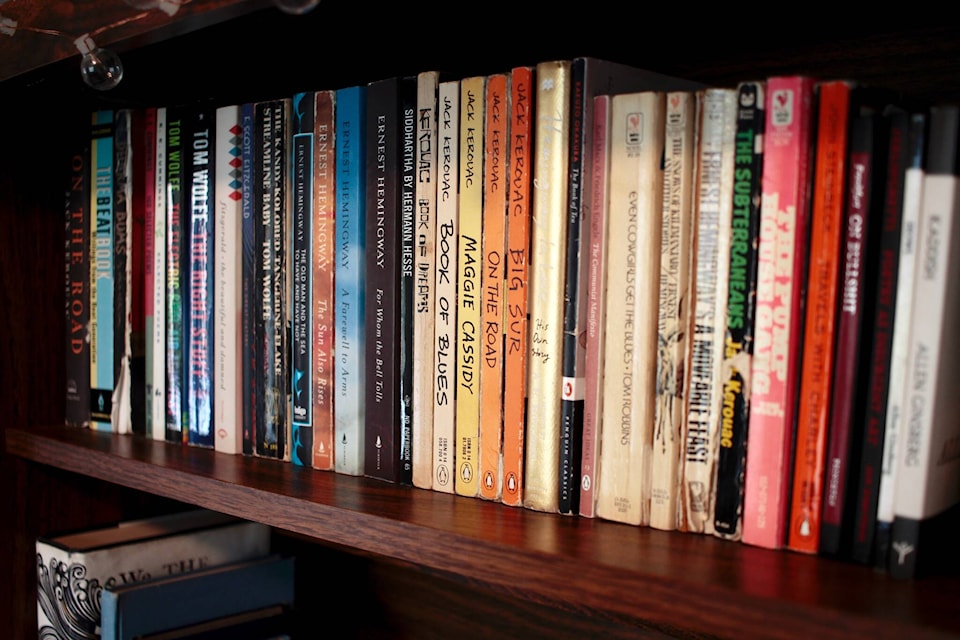I have about half an hour of a commute in the mornings.
Most of the time I put on a podcast for the drive, and one of my favourites has been the Ezra Klein Show by New York Times Opinion. While I’m always interested in what his guests have to say, one of the things I like most about it is that the last question he asks is: what are three books that inspire you?
So now, for my last column of the year I am going to answer that question.
I have almost read 50 books this year. Those 50-ish books were a big influence on the way I thought about the world through the tumultuous year that was 2021. Here are three of those books that influenced me the most and why:
1. The Ecology of Freedom: The Emergence and Dissolution of Hierarchy by Murray Bookchin
I started the year off ambitiously, diving into the political philosopher’s magnum opus. Bookchin combines ecology, anthropology and politics to chart out a world without the influences of hierarchy and globalized capitalism. He outlines a potential society that has at it’s core the principles of usufruct, complementarity and the irreducible minimum. Usufruct is the idea that if there’s a shovel in a community, it should be available for everyone, as long as they don’t break it. Complementarity means that we should all work together for the good of the community. The irreducible minimum is the basic tenet that any human should be able to eat, have shelter and live comfortably just because they’re human. This book influenced me to think outside of the current paradigms and re-imagine how we construct our society. Something kinder, more fair and easier to live in certainly appeals to me. Other books of a similar nature that I read this year are: This Changes Everything by Naomi Klein, Why We’re Polarized by Ezra Klein and How to be an Antiracist by Ibram X. Kendi.
2. Finding the Mother Tree: Discovering the Wisdom of the Forest by Suzanne Simard
This book is a new publication for this year, where Simard exposes an entire intertwined nervous system beneath the forest floor. It covers her research from the days when she was laughed out of the room for suggesting that trees can communicate with each other to her findings becoming accepted as part of the cutting edge of ecology. Simard was born into a forestry family in the interior of B.C., and followed her love of trees and natural curiosity to fundamentally change how we think about the forest and by extension the planet. In the book, she writes about her own life and how she grows to identify with the “mother trees” and their fundamental need to nurture and protect the generations to come. One poignant part of the book is when Simard compares the structure of the fungal network under the soil — which helps the trees communicate by the exchange of chemicals — to the neural networks in our own brain. If the forest is structurally the same as a brain, the possibility that it is intelligent is not outside the realm of possibility. It really made me stop and think. Similar books to this were The Overstory by Richard Powers, Prodigal Summer by Barbara Kingsolver and Entangled Life by Merlin Sheldrake.
3. Desert Solitaire by Edward Abbey
Desert Solitaire portrays a reverence for the harsh and sometimes unforgiving beauty that is our natural world. The writer recounts a year (or two) of him working as a park ranger in Arches National Monument in the 1950s, back when he could go weeks without seeing anybody else and he preferred it that way. Abbey portrays the desert as another character in the book, as a protagonist, love interest, foil and sometimes antagonist. Desert Solitaire and Edward Abbey are polarizing, and while this is not as confrontational as Abbey’s fiction, there are people who feel all sorts of ways about him. This book, to me, is a striking addition to the American “nature writing” canon that also presents a call to action to protect what we’ve got left. I read this when I was on vacation in Alberta. I was camping in Banff, and was struck by how far from Abbey’s ideals the national park idea has strayed, and how easy it would be to get back to them. Cycling on the now-closed Bow River Parkway (a section of the highway between Banff and the B.C. border) and imagining a world without cars was probably one of the best parts of the trip. Similar books were Limits of the Known by David Roberts, All the Wild that Remains by David Gessner and Small Wonder by Barbara Kingsolver.
I’m looking forward to reading more next year.
RELATED: Children’s book brings readers to Read Island — only this one’s made of books!
